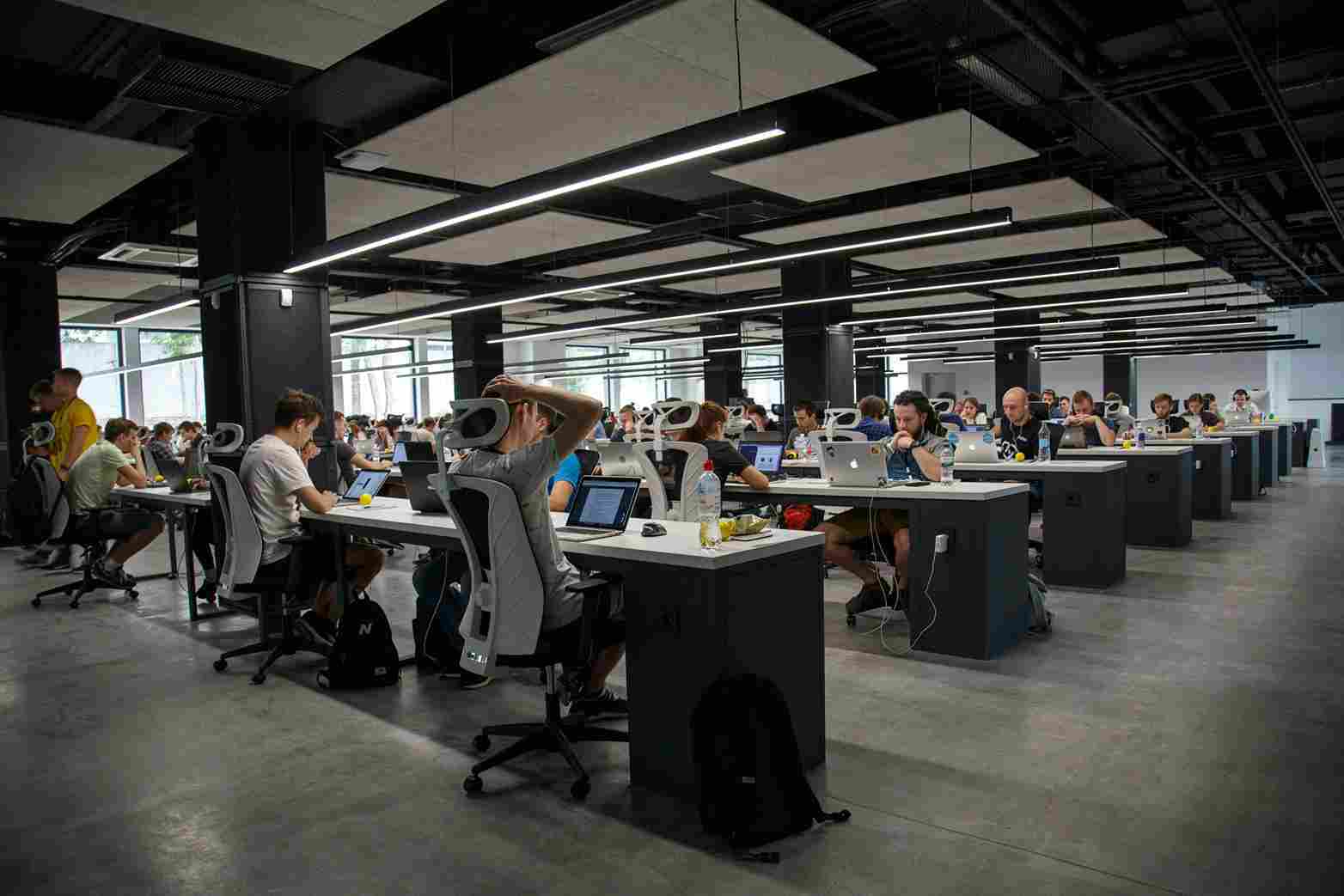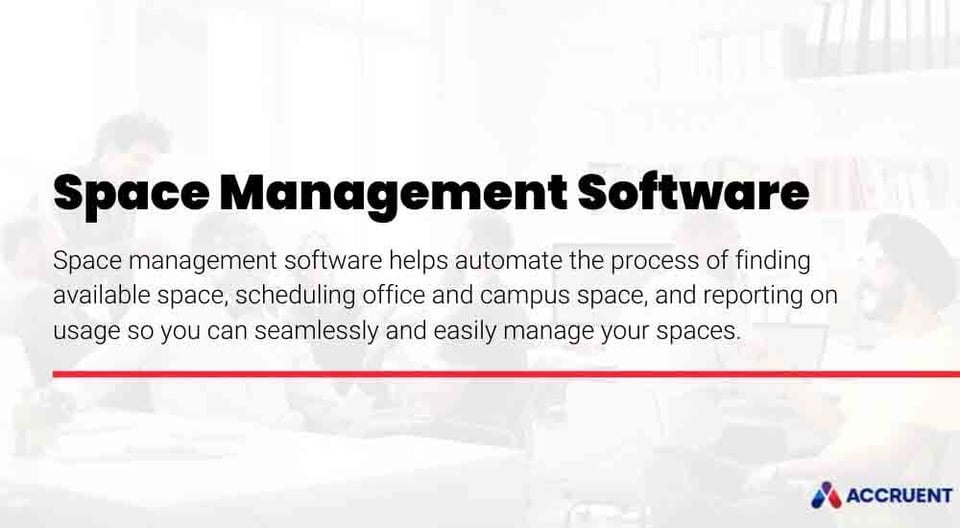
Space Optimization: How To Level Up Your Workspace
Maximize your workspace with effective space optimization. Learn best practices, benefits, and top software to boost productivity and create an ...
Solutions
Workplace Management Solutions
Real Estate Management Solutions
Maintenance Management Solutions
Energy Management Solutions
Engineering Document Management Solutions
Asset Management Solutions
Automate campus scheduling for classes, meetings, and exams with our EMS software.
Plan and manage conferences effortlessly with EMS software to impress guests and streamline operations.
Boost workplace flexibility and maximize space use with seamless desk and room booking.
Organize workplace or campus events smoothly, creating memorable experiences.
Optimize workspace, manage allocations efficiently, and reduce costs with our space management solutions.
Deliver projects on time and within budget by improving communication, collaboration, and efficiency with our software.
Streamline lease accounting for ASC 842, IFRS, and GASB compliance.
Manage leases efficiently by tracking key dates, analyzing costs, and ensuring compliance.
Centralize data and analytics for better insights, faster negotiations, and revenue growth.
Centralize facility and asset maintenance, automate work orders, and ensure compliance with our CMMS software.
Extend asset life, reduce downtime, and prevent costly repairs with data-driven monitoring.
Prevent equipment failures and extend asset life by detecting and addressing issues early.
Make sustainable, cost-efficient energy decisions by monitoring and optimizing power consumption.
Remotely monitor and control equipment with real-time data to predict issues, boost efficiency, and reduce downtime.
Easily share and collaborate on documents, creating a single source of truth for engineers and contractors.
Manage and analyze assets across their lifecycle to schedule maintenance, reduce downtime, and extend lifespan.
Improve visibility, automate work orders, and ensure compliance for efficient facility and asset management.
Resources
Browse our full library of resources all in one place, including webinars, whitepapers, podcast episodes, and more.
Support
Looking for access to technical support, best practices, helpful videos, or training tools? You’ve come to the right place.
About Accruent
Get the latest information on Accruent, our solutions, events, and the company at large.

Space management software makes finding available space, scheduling office or campus space, & reporting usage quick and easy to manage your spaces seamlessly.
Table of contents
In this primer on space management and space management software, you’ll learn about the basics of space management software and how you can use it to drive success in your work environment.
Space management is – just like the name sounds – the practice of managing spaces in which people work or gather, such as:
Space management is the process of planning and scheduling how people and spaces work together, so that people (employees, office building visitors, students on campus) can be in the most appropriate places for work or play. By knowing who should be where and when they should be there, your organization can understand how much space you have, how you’re currently using it, and how to best plan for your spaces in the future.
While space management and facility management are related, they are not the same. Space management has to do with how your spaces are used, and it focuses on how you track and manage your organization's physical space. (Think space utilization, space planning, space occupancy, etc.) Facilities management, on the other hand, encompasses everything around maintaining your organization's buildings and equipment. A facility manager uses facilities management software to create a work order, repair an asset, or perform another maintenance task.
Imagine a world in which you didn’t have software designed to manage spaces. In a small environment where you could count on your fingers the number of spaces that need to be managed, you could probably schedule those spaces without much difficulty. But as the number of spaces scales up, the task becomes exponentially difficult. Trying to decide who goes where quickly gets messy, even with the help of generic software like spreadsheets. Purpose-built space management software allows that scaling to happen seamlessly.

On the user side, the software guides you through the process of choosing a space based on criteria such as availability, location, capacity and other factors. You can also go into the system to make changes and updates when needed. Behind the scenes, an administrator sets up the system to include all bookable spaces and their features (such as available resources like video conferencing equipment). The software then uses intelligence to determine what available spaces meet the individual user’s requirements so that spaces are best used.
The type of space management system that best fits your organization’s needs depends on many factors, such as industry, organization size, and business purpose. For example, office space management software, also known as space and workplace management software or office space facilities management software, connects employees to the workspaces, resources, and technology they need to get work done. Building space management software, on the other hand, helps organizations visualize their space with space planning tools for uncovering additional square footage and managing space allocation through space allocation software tools. And merchandisers use retail space management software to make sure that products are displayed in the right locations in their stores. Space planning software in general is incredibly useful as it enables efficient visualization, organization, and optimization of physical spaces, allowing users to effectively plan layouts, make informed decisions, and maximize the functionality and productivity of a given space.
Are your employees wasting time trying to find a desk or office space that will ensure they are most productive? Do you know whether or how often a particular conference room is underutilized? In a campus, are classes being scheduled in ways that make the best use of the available classrooms, labs and other spaces? The data generated by space management and office space utilization software provides answers to these types of questions so that you can make the most efficient use of your space possible.
Space management software provides many benefits, including:
There are many space management solutions to choose from. When looking for the best space management software to meet your needs, ask yourself:
Here at Accruent, we have been specializing in space management software for more than three decades.
We invite you to check out our space and workplace management software, EMS — an enterprise-level, highly configurable scheduling solution with multiple integration options, comprehensive business rules, robust reporting and analytic tools that address your space scheduling needs.
Maximize your workspace with effective space optimization. Learn best practices, benefits, and top software to boost productivity and create an ...
Discover expert tips on office space planning to create a highly efficient workspace. Learn how to maximize productivity with advanced space planning ...
Learn essential tips and features to consider when choosing workspace management software to optimize your office environment and improve ...
Subscribe to stay up to date with our latest news, resources and best practices